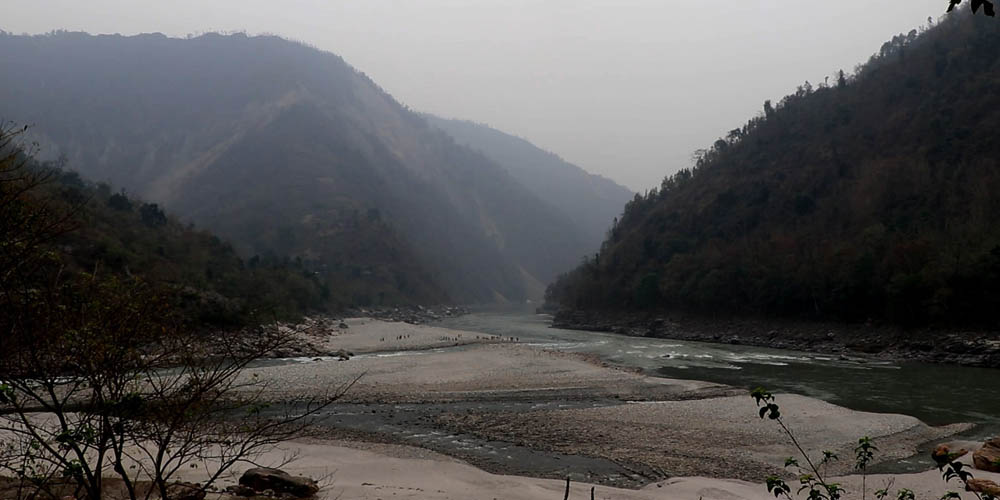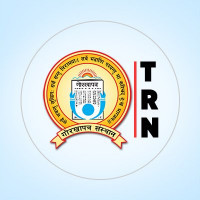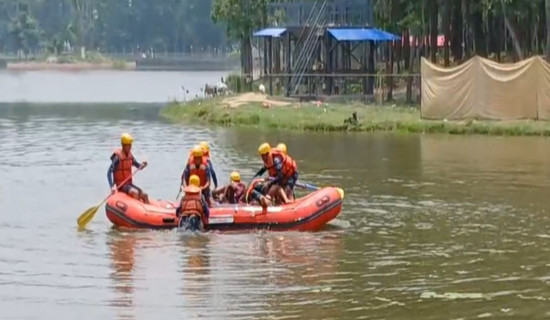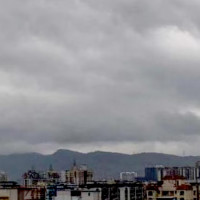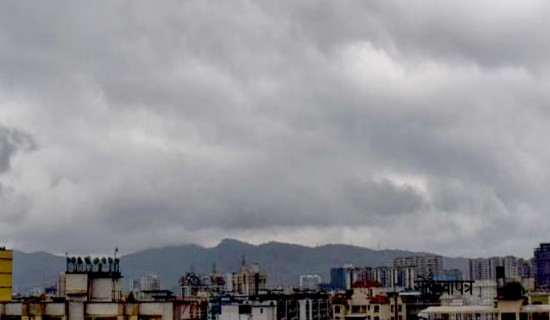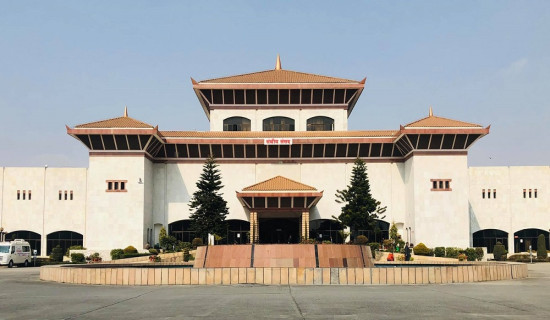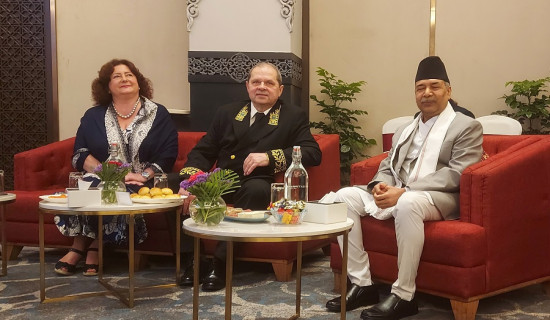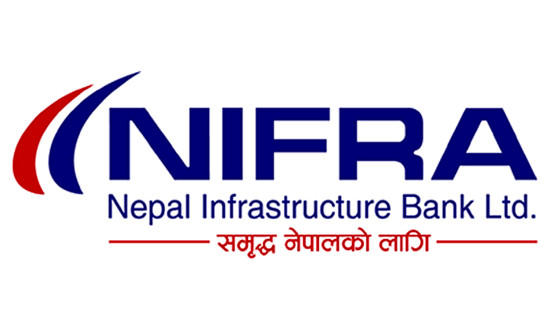- Wednesday, 11 June 2025
Locals protest against plan to construct Koshi High Dam
Hile, May 21 : The Saptakoshi High Dam has once again initiated public debate. Residents of Dhankuta, Bhojpur, Sunsari and Udayapur have demonstrated against the proposed High Dam construction.
Under the leadership of local leader Asim Rai, a 71-member struggle committee has been formed to oppose the construction of the High Dam.
The struggle committee has been actively protesting, since work is underway this fiscal year to prepare a Detailed Project Report (DPR). The committee has submitted a memorandum to the district administration office and local municipalities demanding that the project be halted.
“Locals have started protesting again after the news that DPR for the High Dam would resume,” said Tirtha Rai, a local resident. He added that the proposed Saptakoshi High Dam would force the displacement of hundreds of thousands of people and is not in the interest of the country or its citizens, so the project must be scrapped.
According to the Office of the Saptakoshi High Dam Multipurpose Project and the Sunkoshi Storage-cum-Diversion Project in Biratnagar, drilling must be conducted at nine locations in the current fiscal year for DPR preparation.
Information Officer of the Project, Santosh Adhikari, said drilling is currently only ongoing at two sites in Dhankuta and one in Udayapur. These activities have prompted locals to organise a struggle committee and start protesting.
On Friday, a discussion was held at the District Administration Office, Dhankuta, with the protesting group, political party representatives and stakeholders.
During the meeting, Chief District Officer Tubaraj Pokharel said the struggle committee was urged not to obstruct the ongoing study. “When the study team asked for coordination, we informed the political parties and stakeholders that only a geographical study is being conducted and requested them not to obstruct the process,” said Pokharel.
However, the struggle committee insists that not only should the current work be stopped, but the entire Koshi High Dam project must be cancelled.
Advisor of the struggle committee, Nathu Ram Rai, said that the dam would benefit no one. “It will destroy the homes, source of livelihood and culture of the indigenous communities and hence, it must be canceled.”
He added, “The sacred Khuwalung, a symbol of Kirat heritage, lies in this area, as do Triveni and Barahakshetra. The entire region will be affected. More importantly, thousands of families will be forced to abandon their ancestral homes.” Rai added that their forefathers protested against the project and they are now continuing the same resistance.
The proposed site for the Saptakoshi High Dam lies in the Koshi Galchhi, a border region connecting Dhankuta, Bhojpur, Sunsari and Udayapur districts. During former Prime Minister Girija Prasad Koirala’s visit to India in 1991, an agreement was reached to conduct a feasibility study for constructing the dam in this region.
Since then, the project has remained controversial, with repeated protests from local communities demanding that it be canceled. The ambitious plan aims to generate 3,000 megawatts of electricity from the Saptakoshi River, develop large irrigation systems and open inland water navigation with India.
Initially, the dam height was proposed at 269 metres. However, during bilateral talks held in Biratnagar on October 10 and 11, 2023, a revised proposal suggested lowering the height to 239 metres.
Studies have shown that a 269-metre-high dam would submerge 190 square kilometres of land in Koshi Province, while a 239-metre dam would inundate 130 square kilometres. Still, the conflict remains unresolved.
“Our demand is not to reduce the dam's height but to cancel the entire project,” said Rai, coordinator of the struggle committee. “This is a project that will erase our lives and identity must be scrapped.”
What has happened so far?
During Prime Minister Girija Prasad Koirala’s visit to India in 1991, an agreement was reached between Nepal and India to form a joint technical expert committee under the multipurpose project framework. In 1997, during Sher Bahadur Deuba’s visit to Delhi, the responsibility of studying the Sunkoshi-Kamala Diversion was added to the committee’s mandate.
In 2004, a secretary-level meeting between water resource officials of both countries decided to establish an office to prepare the DPR of the Koshi High Dam. Although 20 years have elapsed since the establishment of the office, the DPR has not been completed.
According to Information Officer Santosh Adhikari from the Saptakoshi High Dam Multipurpose Project and Sunkoshi Storage-cum-Diversion Project Office, studies conducted by the Japan International Cooperation Agency (JICA) are also available. As early as 1946, the Indian government had conducted a site survey for the project, and in 1981, it prepared a feasibility report highlighting potential benefits such as irrigation, hydropower generation and flood control for both Nepal and India.
Similarly, in 1985, Nepal, with support from JICA, prepared a master plan for water resource development in the Koshi River Basin, prioritising the Saptakoshi High Dam and the Sunkoshi Storage-cum-Diversion Project.
According to this master plan, the diversion project would generate electricity and provide irrigation to areas on both sides of the Kamala River, while also helping to control flooding in its lower reaches.

